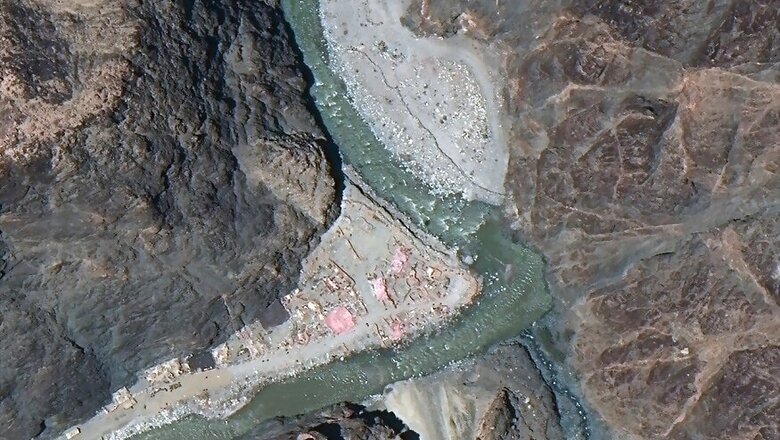
views
At the Chandigarh airbase, the Indian Air Force’s C-17 Globemaster is airlifting precious cargo to Ladakh, one painstaking sortie at a time. Its T– 90 tank weighs 46 tonnes and a one-way trip will cost over Rs 10 lakh.
From across army cantonments and airbases in North India, troops, artillery guns, mechanised infantry, air surveillance radars, frontline fighter jets and helicopters have been moving to Ladakh for the last one month. By the time the last boot hits the ground, there will be 45,000 acclimatised soldiers in India’s newest Union Territory.
All three advanced landing grounds - DBO, Fukche and Nyoma - have been activated. So have all forward airbases facing China. The Navy’s multitasker, the P-8I, is in the sky keeping an eye on Chinese movement. Patrolling has been tightened at 65 points along the 1597-km border that Ladakh shares with China.
This war-like build up necessitated as Indian and Chinese soldiers continue to be eyeball to eyeball at the Line of Actual Control at Galwan Valley, Hot Springs, Depsang Plains and Pangong Tso in Ladakh and at Naku La in North Sikkim.
It has been almost two months now and the standoff shows no signs of de-escalating despite multiple military and diplomatic level talks. If anything, things have only escalated on the ground.
The Chinese have amassed troops, tanks, missile units and fighter planes along the border and is building infrastructure in areas within India’s side of the LAC. There are reports of an helipad being laid out near finger 4 in Pangong Tso.
Fortifications have come up at Patrol Point 14, where the June 15 clash took place in which 20 Indian soldiers were killed. Chinese observation posts, tents and a wall popped up on satellite imagery on the same day that Indian and Chinese Corps Commander’s met for 11 hours to “cool down’ the situation.
Despite the diplomatese, sources say the talks are ‘deadlocked’ because the Chinese refuse to budge. They maintain they have come only up to their claim line and there is no reason why they should back off. Never before seen maps have been produced to lay claim over the entire Galwan Valley.
Not surprisingly, dates for next military level talks have not been fixed.
“China has to stop the practice of transgressing and trying to erect structures on the Indian side. The only way to resolve the military standoff is to stop erecting new structures,” India’s Ambassador to China Vikram Misri has said.
Lieutenant General DS Hooda, a former Northern Army commander, predicts greater tension and aggression all along the 3,488 km long LAC. “This is not ending in a hurry. It will depend on how much both sides are willing to surrender.”
A highly placed source in the Ministry of Defense says the Army has been told to prepare for the worst. “The rules of engagement with the Chinese at the LAC have changed post the Galwan Violence. “
The mood at Army Headquarters is more cautious. “Be prepared for the long haul,” says a two-star general in the know of things. “The process of disengagement will be more like a test match not a T – 20. It could take 2 to 3 months – maybe more.”
After three months, fresh snow will come to Ladakh and cut it off from the rest of India for six months. The ‘long haul’ could end up being really long. The Army has already started preparing for it.


















Comments
0 comment